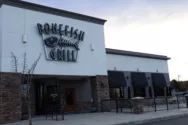
Home » Hindsight is 2020: A look ahead for Washington’s wine industry
Hindsight is 2020: A look ahead for Washington’s wine industry

March 15, 2021
Washington wine has experienced unprecedented growth over the past 20 years, adding an average of one new winery every week, doubling the vineyard acreage, and steadily turning into an $8.4 billion industry.
And then 2020 happened – a year of turmoil, change at every turn, new restrictions and much uncertainty.
It forced the entire industry to take a good look inward, which in turn led to greater creativity, community, growth – and a whole lot of planning for the still uncertain, but perhaps more certain, future.
“If this past year has taught us anything, it’s to expect the unexpected,” said Steve Warner, president of the Washington State Wine Commission. “It’s important to take the lessons of 2020 and continue making new plans – concrete, yet flexible plans. The million-dollar question is ‘now what?’ Although you never can be certain, our board of commissioners is taking all of the data and information we have to make assumptions and predictions for the year ahead.”
Direct-to-consumer model
Direct-to-consumer (DTC) business has been a lifeline for wineries through the pandemic.
Online, to-go and curbside sales, digital activations and limited in-person interactions have allowed wineries to connect with customers to sell wine throughout this time.
It’s expected that DTC business will stay strong and pick up momentum as more in-person tasting experiences are permitted.
“Some aspects of the pandemic customer experience may be here to stay,” Warner said. “Wineries and customers have enjoyed the one-on-one time, so we might see more tastings by appointment and other opportunities for small groups as we open back up.”
DTC business also will benefit with the rise of tourism, which travel experts predict will ramp back up over the next year.
Washington wineries are preparing to welcome visitors – especially from drivable distances around the Northwest – back in much higher numbers this spring, summer and fall.
Think (and drink) local
The great majority of Washington’s wineries are small, family-owned businesses, which depend on community support and wine club members. Luckily, wineries found that during the pandemic, customers continued to support local.
“It’s more important than ever that we support our local businesses, the heartbeat of our communities,” Warner said. “This pandemic put a spotlight on the importance of supporting each other, which we expect will continue even in post-pandemic life.”
Value-led buying
A rising trend among consumers is purchasing with intention and in alignment with their core values.
While these are individual business decisions, the Washington wine industry is collectively taking action in two specific areas: Diversity, equity and inclusion and sustainability.
The wine commission board formed a Diversity, Equity & Inclusion (DEI) task force in the summer of 2020 to integrate DEI into the ethos of the industry.
The task force determined the need to bring in expert-level advice and guidance and is beginning work with two organizations which will help the industry take steps toward inclusivity in every way.
Following the lead of several reputable consumer and trade surveys, a Washington wine industry group approved an effort to formally launch a certified sustainable wine program next year.
This will allow Washington wineries and vineyards to label their bottles as sustainably farmed. The label communicates a commitment to being environmentally-sound, socially equitable and economically viable.
Bigger crop in 2021
Not only were Washington winegrowers impacted by Covid-19 in 2020, they also were impacted by a series of wildfires and weather events that decreased the size of the crop.
Luckily, growers are happy about the overall quality of the fruit. However, there will be less of it compared to years past.
Winegrowers are always at the mercy of Mother Nature, but assuming there are no negative impacts to the growing season, they should see a significant increase in the 2021 grape harvest.
Innovation
Innovation is at the core of Washington’s wine industry, from the vineyards to the cellar, to the marketing, packaging and research efforts – everything.
Although Cabernet Sauvignon is king in terms of production, there are new vineyard plantings going in every year as wine growers experiment with different varieties and hone in on the right sites for specific varieties.
Washington’s winemakers embody innovation, as they encourage each other to push boundaries, try new techniques and work collaboratively on experimental projects. On the marketing side, wineries are innovating with alternative packaging, virtual experiences and new social media activations.
Of course, all of the innovation and experimentation is grounded in data provided by Washington’s world-class wine and grape research program.
“Our wine research program is vital to the continued success of both our winemakers and winegrowers,” Warner said. “With the research backbone, and collaborative spirit of our entire industry – we’re truly only just scratching the surface of what’s possible here.”
Bottom line
While it’s hard to plan for the uncertain, one thing is for certain: Washington’s wine industry is strong, flexible and poised to thrive no matter what circumstances this year may bring.
Heather Bradshaw is communications director for the Washington State Wine Commission.
Hospitality & Meetings
KEYWORDS march 2021





